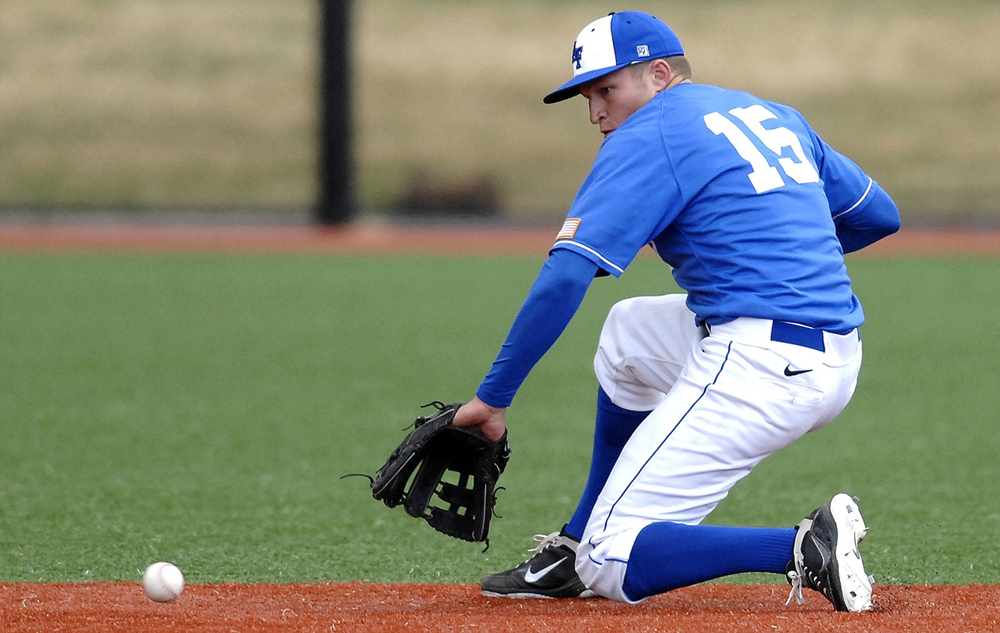Fielding ground balls at 2nd base is a fundamental skill that every infielder must master in baseball. It requires a combination of quick reflexes, proper technique, and confidence. In this comprehensive guide, we’ll provide you with tips and techniques to help you effectively field ground balls at the 2nd base position.
1. Ready Position and Anticipation
- Stance: Start with your knees slightly bent, weight on the balls of your feet, and your body leaning slightly forward. This ready position allows you to react quickly to the ball.
- Anticipation: Pay close attention to the batter’s swing and contact with the ball. Anticipate where the ball is likely to be hit based on the batter’s tendencies.
2. Glove Work

- Two-Handed Approach: Always use two hands to field ground balls. Extend your glove hand out toward the ball and keep your bare hand behind it for support and balance.
- Stay Low: Maintain a low stance as you approach the ball. This allows you to keep your center of gravity down and gives you better control.
3. Footwork
- First Step: As soon as you recognize the direction of the hit, take a quick first step in that direction. Your initial movement is critical to getting to the ball in time.
- Angle to the Ball: Approach the ball at an angle that allows you to field it on your glove side. This minimizes the risk of the ball taking a bad hop and helps you make a smoother play.
4. Body Positioning
- Stay in Front: Position your body directly in front of the ball as much as possible. This allows you to create a barrier and block the ball from getting past you.
- Knees Bent: Keep your knees bent and your body low to the ground. This provides better stability and balance while fielding.
5. Fielding Techniques
- Soft Hands: Try to catch the ball softly in your glove rather than letting it bounce hard. This minimizes the chance of the ball popping out of your glove.
- Stay Relaxed: Keep your muscles relaxed as you field the ball. Tensing up can lead to mistakes.
6. Fielding Backhands
- Positioning: For backhand plays, position yourself so the ball is hit to your glove side. Extend your glove hand and field the ball with your glove fingers.
- Practice: Spend extra time practicing backhand plays since they can be challenging. Work on your footwork and glove positioning.
7. Quick Transfer and Throw
- Quick Transition: Once you have fielded the ball cleanly, transfer it from your glove to your throwing hand as quickly as possible. This is crucial for making accurate throws.
- Strong Throw: After transferring the ball, make a strong and accurate throw to the intended target, whether it’s 1st base for the out or another base for a double play.
8. Repetition and Drills

- Practice, Practice, Practice: Fielding ground balls is a skill that improves with repetition. Incorporate various fielding drills into your practice routine to build muscle memory.
- Simulate Game Situations: Create game-like scenarios in practice to work on reacting to different types of ground balls and game situations.
9. Stay Focused
- Concentration: Maintain your focus throughout the play. Avoid distractions and stay committed to making the play.
- Confidence: Believe in your abilities. Confidence can make a significant difference in your fielding performance.
10. Learn from Others
- Watch and Learn: Study professional infielders to observe their techniques and positioning. You can gain valuable insights by watching experienced players in action.
By incorporating these tips and techniques into your training regimen and consistently working on your fielding skills, you can become a reliable and effective 2nd baseman, making crucial plays for your team and contributing to your success on the baseball field.
